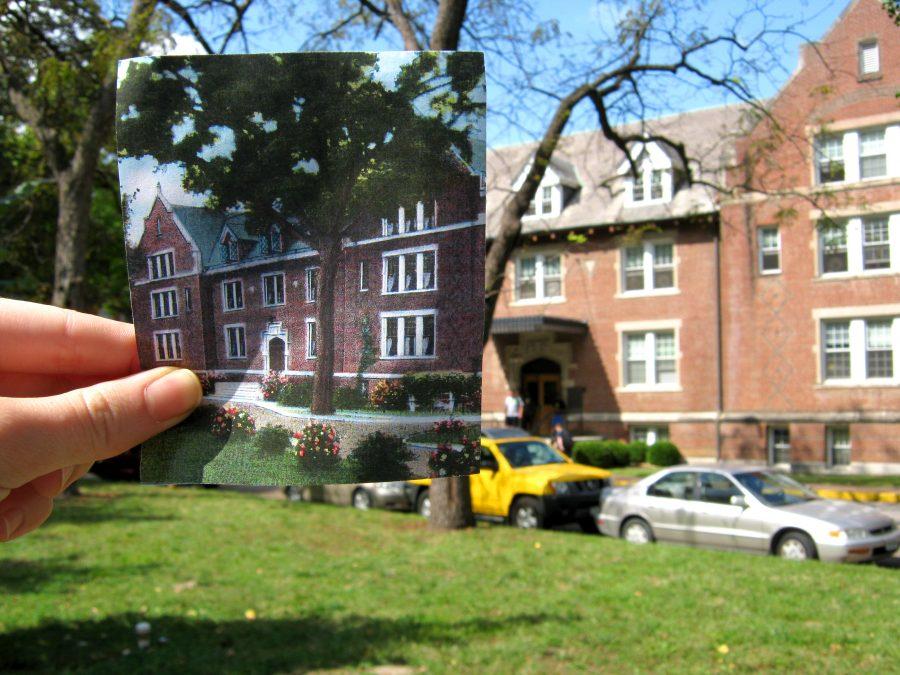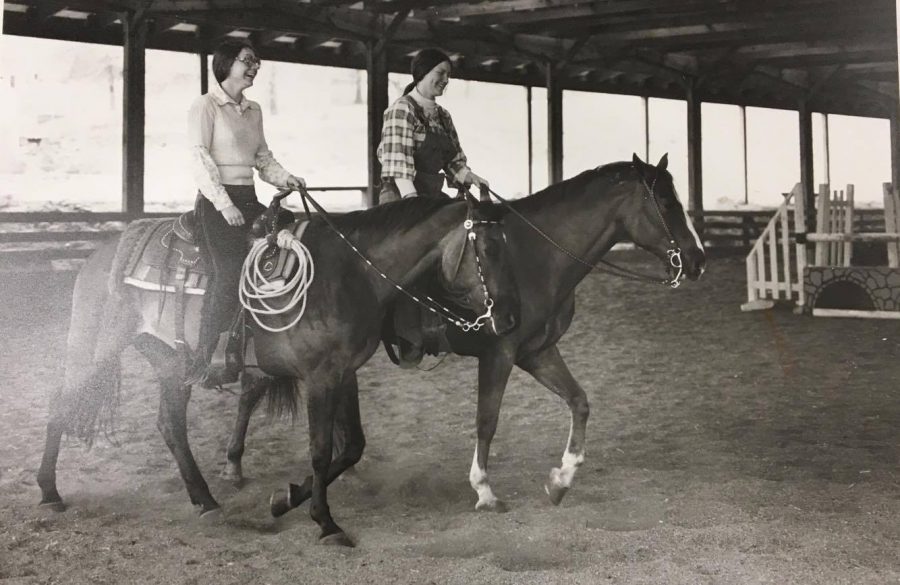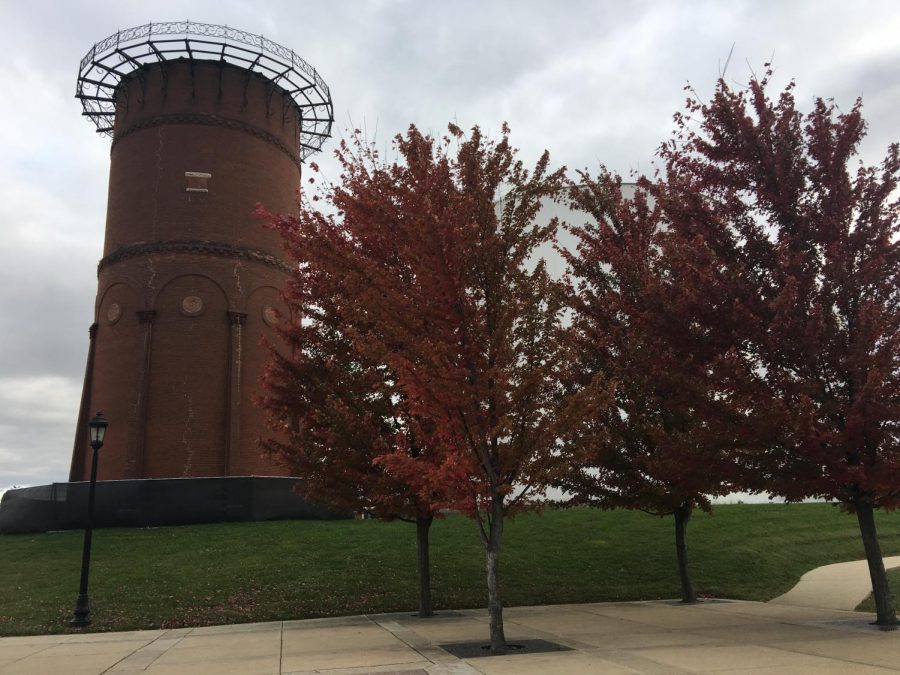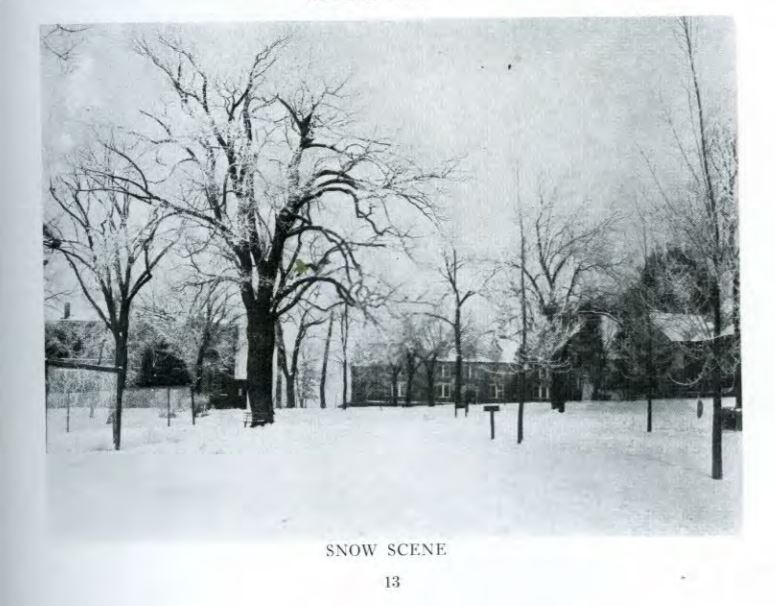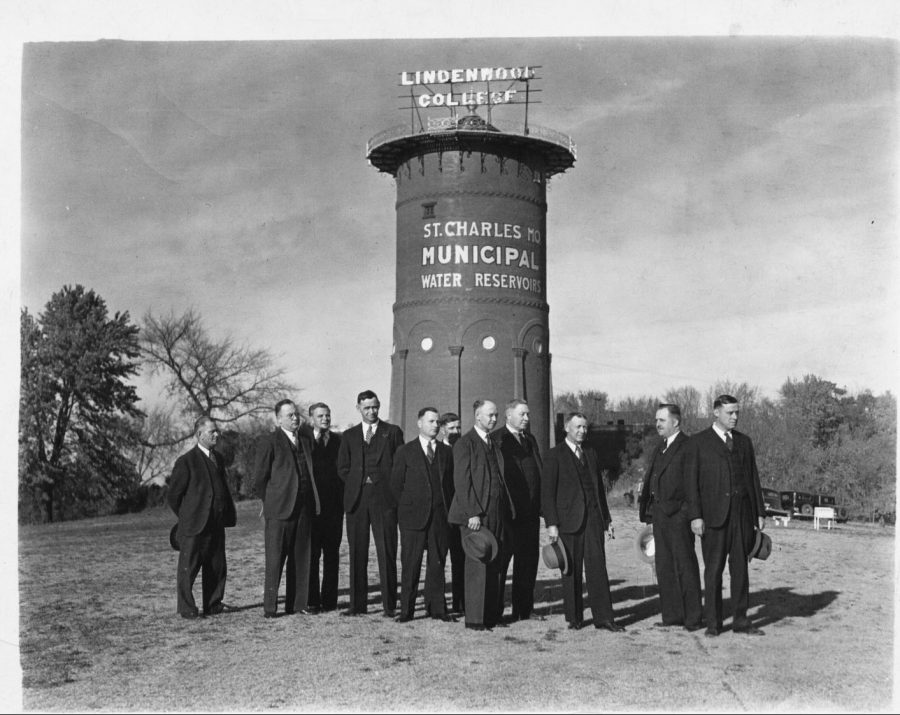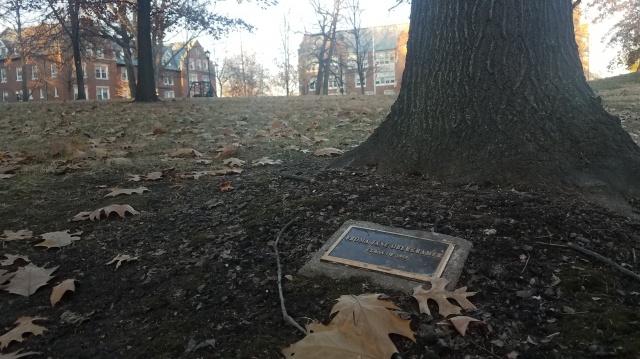Michael Sprague | The Legacy contributor
Featured photo courtesy of Mary Ambler Archives. A photo is held in front of present day Ayres Hall showing a then-now comparison. Merged by Madeline Rogier.
This story is part of the “Names that built LU” weekly series issued by The Legacy that has been profiling 28 campus buildings named after Lindenwood personnel.
In 1906, current Lindenwood president Dr. George Frederick Ayres made a statement that today seem as though it was seen in a crystal ball. Making a case for the future of Lindenwood, Ayres said “today Lindenwood is standing at the cross roads—one leading to a great college such as Smith, Wellesley or Vassar, the other, the fate of being classed merely as a girl’s seminary,” according to university records.
Ayres, president from 1903 until his death in 1913, hoped to add a new multi-purpose building to the campus, incorporating administrative offices, a dining hall, recreation rooms and student housing.

Ayres hopes of furthering the college were shared by Col. James Butler. During a luncheon in early 1907, Butler agreed to donate $10,000 of the $40,000 needed for the new building. Steel industry giant Andrew Carnegie also promised $10,000 once the other $30,000 was guaranteed.
The goals were met and on June 4, 1907, ground was broken on the new building. The original plea, made to the administrative bodies of Lindenwood, was made during the college’s dodranscentennial –or 75th anniversary in layman’s terms. In response, the building was originally named Jubilee Hall, coinciding with the colleges 75th anniversary celebration, also known as a Diamond Jubilee.
The building is also features diamond patterns throughout the brickwork, again playing to this celebration. The name stuck until 1927.

Having passed during his time in office in 1913, Ayres embodied the expansion ideas he shared with Col. Butler. That drive to better Lindenwood was mirrored by his successor, Dr. John Roemer, as well.
Continuing the work of his predecessor, Roemer knew much of his work to further the college was a direct result of the precedent set forth by Ayres. It was because of this, that nearly 25 years after his death, the building he helped build was dedicated in his honor.
Now the second-oldest campus building, Ayres Hall is only outdated by the campus’ first dedicated building, Sibley Hall.




